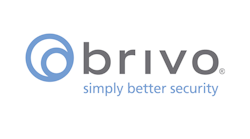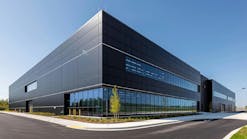This article originally appeared in the October 2021 issue of Security Business magazine. When sharing, don’t forget to mention Security Business magazine on LinkedIn and @SecBusinessMag on Twitter.
What is Proptech? Broadly defined, it is a collection of technologies designed to bring about the digital transformation of real estate. Digital transformation, in turn, refers to the process of reinventing business models, workflows, supply chains, customer interactions — and even the underlying products and services themselves — as fundamentally digital.
For commercial, multifamily, and enterprise properties, this means applying technology to every aspect of the business, including leasing, finance, tenant acquisition, property management, amenities, digital infrastructure, security, access management, loss prevention, and collaboration among all the participants.
Proptech is rapidly changing the way people buy, rent, sell and manage properties. As a result, and very much on purpose, they are also changing the economics and power dynamics across the entire business ecosystem for the property asset class. This same asset class and ecosystem are the primary domains of physical security systems, which makes it impossible to think that our industry will not be challenged by this new environment.
Evolutionarily speaking, it is our very own “adapt or die” moment.
Luckily for us, the security industry has gained some momentum with our own digital transformation over the last decade – we got over our early IP hesitancy, ditched our cloud denialism, and replaced prox cards with mobile credentials. We learned that user experience is as important a design principle for security applications as it is for any other consumer application.
In the process, Proptech and security become completely entangled. Access control is not just a security system anymore; it is an employee experience differentiator. Visitor management systems do not just displace the clumsy logbook in the lobby; they are now a vital defense around spaces and a signal to a customer’s guests that they care enough to go digital.
Pondering all of this, I recently posted a poll on LinkedIn asking my followers if they thought there was a relationship between security and Proptech. More than half replied ‘yes.’ People are paying attention to what has become the single most important context shift around our industry. I probed deeper and asked whether anyone thought that security was becoming a subset of Proptech – only 12% were willing to cross that bridge.
I would go a step further and say that security is not just a part of Proptech; it is foundational to Proptech. I start with the old adage, “you cannot manage what you cannot measure.” If you cannot measure (and manage) the flow of people in a space, you cannot measure (or manage) anything else related to the property.
Security is Foundational to Proptech
There are two different dimensions to the foundational importance of security when it comes to Proptech. The first, security systems – access control in particular – serve as a technological foundation to all other building-related Proptech systems. The second is more subtle but equally important from a customer experience perspective: having a sense of safety and privacy is a prerequisite to enjoying using a physical space.
I like to use Maslow’s hierarchy of human needs theory to think about this relationship between security and Proptech. In the hierarchy, the bottom tiers of the pyramid are basic needs – physical necessities and safety, food or water, and shelter. These basic human needs must be met before moving up the pyramid to more complicated needs – love and belonging – then finally to the tip of self-actualization. In this analogy of Proptech as the pyramid, security is the foundation. It is the basic need on which all other needs depend.
In practice, it can look like this: When people move into a new house or office, one of the first systems they install is security; in fact, it is a strong, basic need in today’s world. For vendors, once a security platform has been installed to meet that customer’s basic need, then comes the opportunity to “land and expand.” The platform is foundational to everything else that is added on.
For example, once an access control technology is implemented for an apartment building’s lobby doors, a vendor could add additional tenant amenities such as intercoms, elevator access, smart locks for the individual apartment doors and more. The entire Proptech system rests on one security platform.
Understanding Proptech Market Segments
The Proptech ecosystem is diverse. This diversity is a product of new investment over the past five years, including $23.5 billion in 2020 alone. As interesting as the whole space has become, some Proptech categories will stand out as being much more interesting to security integrators than others. Not surprisingly, these are market segments that are directly related to the physical aspects of property management and security.
Proptech applications can be divided into categories:
- Smart Building, security, tenant experience, and property management technologies, including sensors, access control, visitor management, health and safety, occupancy, analytics, coworking, hybrid office, digital amenities, property management, and a grab-bag of CRM applications that improve service.
- Transactional technologies that facilitate the buying, selling, portfolio management, leasing, renting, and sharing, in both commercial or multifamily markets, plus all the data collection and analytics that help these markets function efficiently.
- Fintech-related applications that support financing, payments, insurance, security deposits, application processing, and any other aspects of the finance side of the industry.
- Construction technology (aka Contech) may be relevant to how security is specified into new buildings, but it does not change what we are actually doing, just how it is managed. This means that the ‘user’ is typically a general contractor or developer, not a security professional.
Proptech in the Post-COVID World
The COVID-19 pandemic will have a long-lasting impact on many industries and has brought new attention to areas of business that previously did not. In Brivo’s 2021 Smart Security Trends Report, 75% of respondents said the pandemic increased the importance of physical security in their organization.
The question on the minds of many business leaders right now is, “When and how will we go back to the office...if we ever fully go back at all?” Some companies may not fully return to an office and instead rely on a hybrid work model, where only a portion of the company’s population is in an office at one time, while the rest work remotely.
We see the preference change in our own research data. According to a recent Brivo Return to the Office study, for every two workers itching to return to a pre-2020 on-site work routine (24%), another three prefer to remain working at home (40%) or adopt a hybrid home-office approach (35%).
The reason for the increased preference for at-home work is concern about health and safety protocols. In the same survey, 59% of workers have health-safety concerns about returning. Among protective measures that would make staff feel more comfortable, the most desired are limiting the number of people on site, touchless door entry, mask detection technology, and digital proof of vaccination (top for c-level). Note that all of these measures can either be managed by digital technology or are not possible at all without digital technology.
New Business Opportunities for Integrators
There are many ways for integrators to play in the Proptech market because many of the “smart building” technologies are already familiar. Even the newer devices that have been innovated of late have similar technical profiles and installation requirements. That is all good news for integrators who want to expand their business footprint.
Older market sizing estimates from Omdia placed the traditional access control business at approximately $5B in North America. With the market expansion driven by cloud-based Proptech systems and services, the U.S. market is now projected to be in excess of $20B by 2027, which implies that the existing integrator businesses will expand by 4x (great news!), or that new competitive integration businesses will be born to meet that increasing demand (probably not what you want).
Which integrator-friendly Proptech categories will thrive?
1. Access control is surging with a vengeance. It is being used by every new building-related Proptech service as either a third-party integration or as a native capability within the product itself. You cannot enable amenities or access to rental or leased spaces without it.
A report from CBRE found that 86% of companies surveyed said that flexible office space will play a role in their real estate strategy in the future. The shift toward shared or co-working spaces is a big access control driver, because co-working arrangements divide spaces into smaller managed parcels, and thus drive up the density of access control requirements. Every conference room, office, studio, and board room is now managed by a scheduling system connected to an access control system.
2. Energy management is also one of the top drivers of new low voltage wiring and sensor installations. Large corporate and Class A commercial spaces have historically been managed by the big manufacturer-supplied Building Management Systems that are designed to handle a million square feet or more. But this leaves the majority of older buildings and tenant-controlled spaces open to new technologies that help them take control of their own energy futures. This is true even in smaller spaces, and not just for the “big iron” enterprise or whole-building systems that are dominated by a few very large manufacturers.
3. Sensors of all kinds – which install just like most security equipment – are also on the rise for everything from occupancy management, to traffic control and temperature sensing. Occupancy management has become a higher priority because of COVID concerns, but it is likely to remain important as everyone tries to sort out what employee populations will look like for years to come. Air quality sensors have also been driven by COVID needs, but are probably here to stay, given that indoor air quality was already a concern for healthy buildings.
The rise of these new Proptech priorities and the expanding market for familiar technologies mean that integrators need to ask themselves whether they want to participate in this growth or just keep doing what they have always done. The market is changing, the suppliers are changing, and in some cases, the business models are also changing. This makes participation in Proptech a question of either growing with the new technologies or be cannibalized by newer, more agile firms that will.
Steve Van Till is Founder and CEO of Brivo and is the author of The Five Technological Forces Disrupting Security, winner of the ASIS 2017 Book of the Year Award. He currently serves as Chairman of the Standards Committee for the Security Industry Association (SIA) and holds numerous patents in the field of physical security. Request more information about Brivo at www.securityinfowatch.com/10213096.




